Introduction #
The The KaraAgroAI Cocoa Dataset was created by authors to provide an open and accessible Cocoa dataset with well-labeled, sufficiently curated, and prepared Cocoa crop imagery that will be used by data scientists, researchers, the wider machine learning community, and social entrepreneurs within Sub-Saharan Africa and worldwide for various machine learning experiments so as to build solutions towards in-field Cocoa crop disease diagnosis and spatial analysis.
Note, similar The KaraAgroAI Cocoa Dataset datasets are also available on the DatasetNinja.com:
- The KaraAgro AI Maize Dataset
- Makerere University Cassava Image Dataset
- Makerere University Beans Image Dataset
- Makerere University Maize Image Dataset
Motivation
Despite the fact that the agricultural sector is a national economic development priority in Sub-Saharan Africa, crop pests and diseases have been the challenge affecting major food security crops like cocoa. Cocoa Swollen Shoot Virus Disease (CSSVD) can substantially reduce yield by about 70% and even cause the death of cocoa trees within 2–3 years of infection at all stages of cocoa growth. It is one of the major disease problems affecting cocoa production in West Africa, most especially, in Ghana, Côte D’Ivoire, Nigeria, and Togo. Anthracnose, caused by Colletotrichum lupini, is the world’s most important lupin disease. The current state of data collection and crop pest and disease diagnosis is transitioning from disease identification using visible symptoms to the use of data-driven solutions applying machine learning and computer vision techniques. The image data previously collected is biased and not reproducible It has also not been sufficiently curated, prepared, and shared with the wider community.
Dataset Creation
The dataset was created to provide an open, well-labelled, sufficiently curated and accessible cocoa image dataset. Data scientists, researchers, and the broader machine learning community can use it for various machine learning experiments to build cocoa crop disease diagnosis and spatial analysis solutions. The dataset was created by a team of data scientists, agricultural scientists and agricultural officers from the KaraAgro AI Foundation, with support from the University of Ghana - Forest and Horticultural Crops Research Centre, Kade. It contains different instances that were captured across all the 7 cocoa growing regions of Ghana. The data associated with each instance was acquired from cocoa farms. These were different farms that were identified within the districts of the 7 cocoa growing prominent regions across the country. The data was collected using the KaraAgro AI - Collect app, a software program that uses a module that enables crowdsourcing of crop disease surveillance data from farms. This application was installed on Android devices. Data collectors used these Android devices to collect the cocoa data. This data was collected in a period of 4 months from September 2021 to December 2021. Each instance is associated with a class label based on the status of the crop i.e. diseased or healthy.

Cocoa Data Labels.
Summary #
The KaraAgroAI Cocoa Dataset is a dataset for an object detection task. It is used in the agricultural industry.
The dataset consists of 11978 images with 21712 labeled objects belonging to 8 different classes including cocoa-swollen-shoot-virus-leaf, anthracnose-leaf, healthy-cocoa-leaf, and other: healthy-cocoa-pod, anthracnose pod, cocoa-swollen-shoot-virus-pod, healthy-cocoa, and cocoa-swollen-shoot-virus-stem.
Images in the KaraAgro AI Cocoa dataset have bounding box annotations. There are 2 (0% of the total) unlabeled images (i.e. without annotations). There are no pre-defined train/val/test splits in the dataset. Alternatively, the dataset could be split into 3 health statuses: cssvd (5806 images), anthracnose (3215 images), and healthy (2957 images). The dataset was released in 2022 by the University of Ghana.
Here are the visualized examples for the classes:
Explore #
KaraAgro AI Cocoa dataset has 11978 images. Click on one of the examples below or open "Explore" tool anytime you need to view dataset images with annotations. This tool has extended visualization capabilities like zoom, translation, objects table, custom filters and more. Hover the mouse over the images to hide or show annotations.

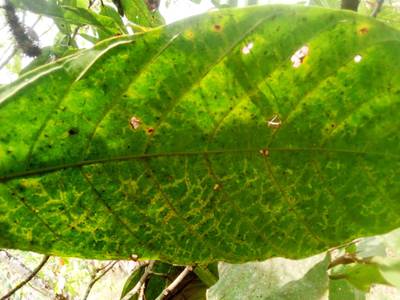

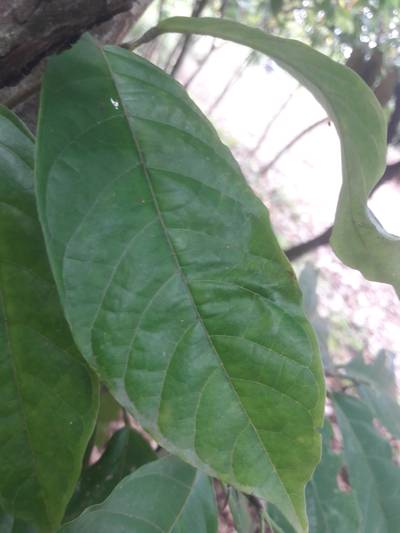

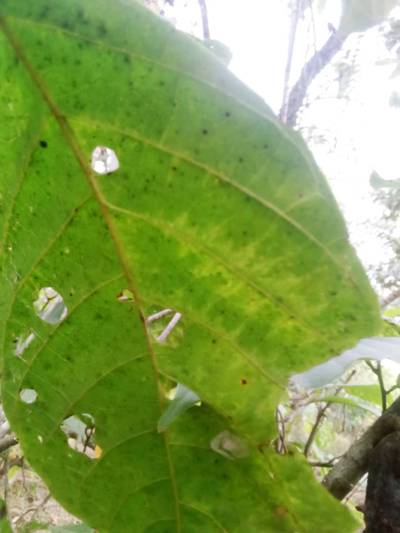



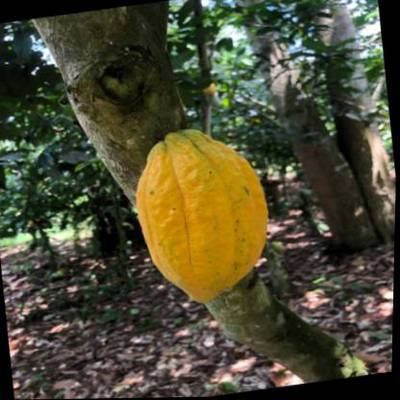

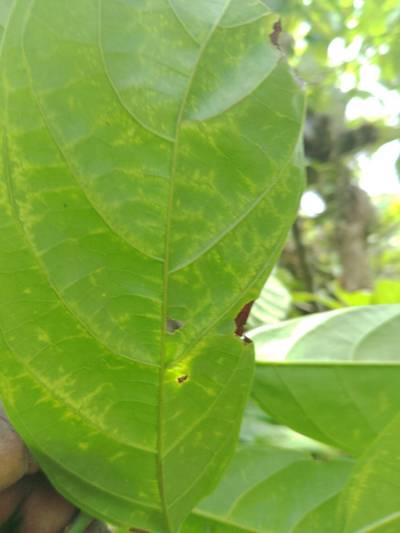

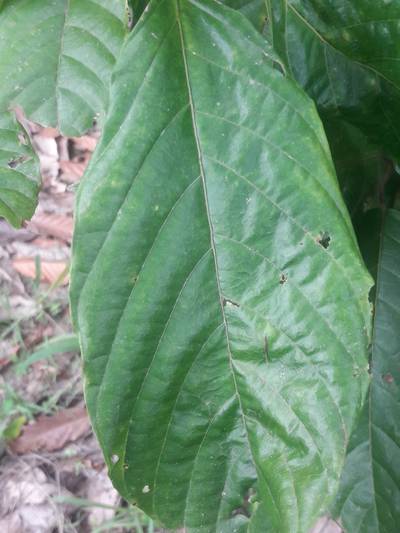

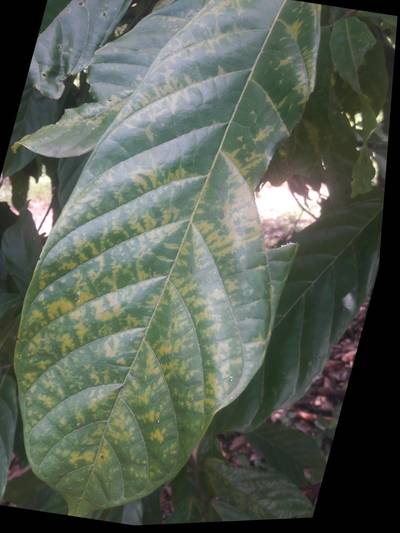

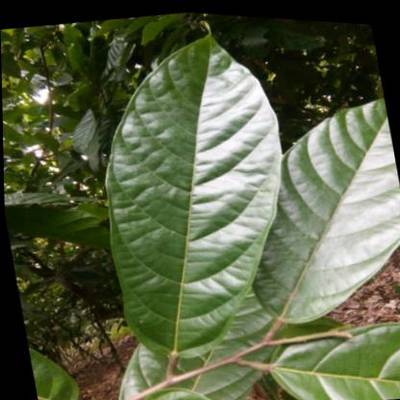

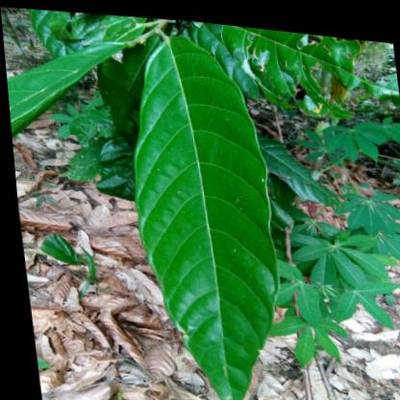



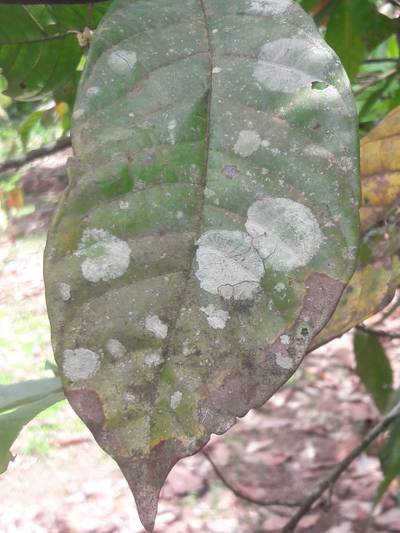



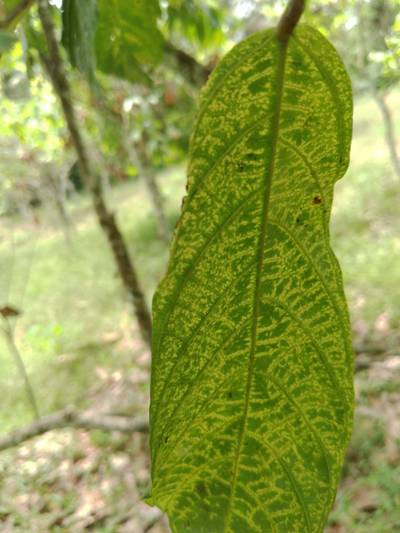

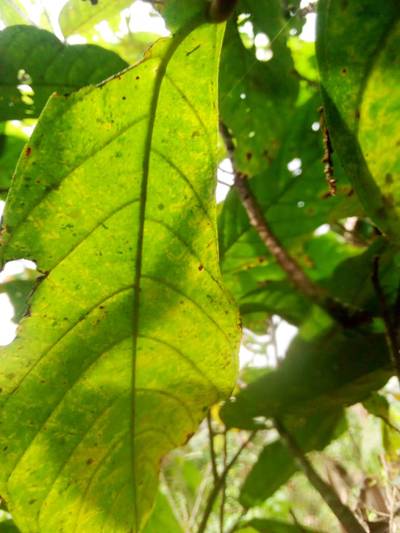





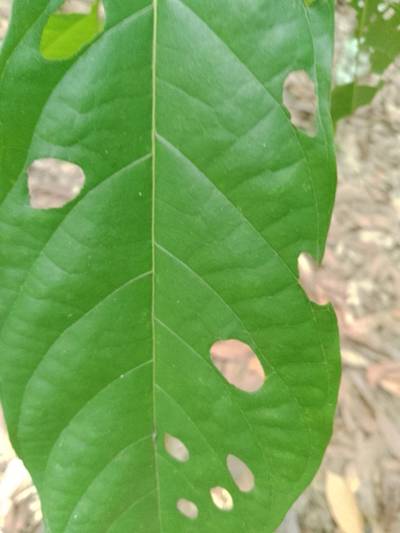



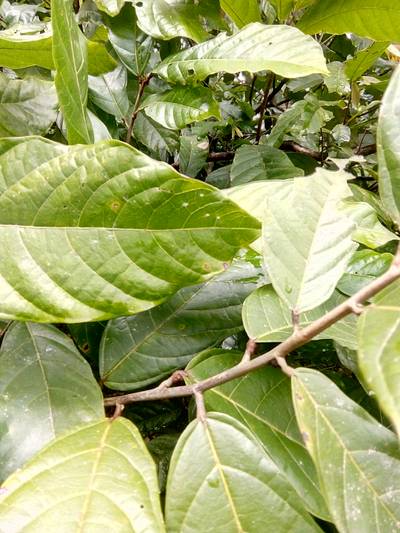

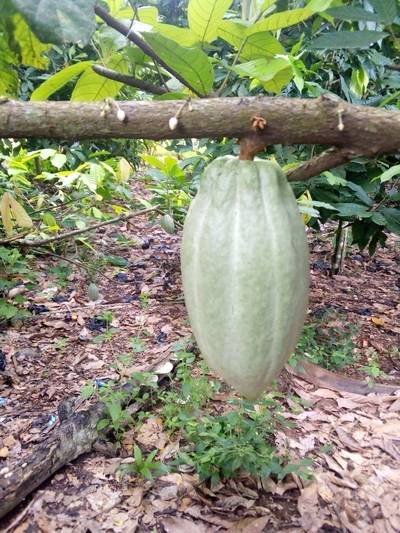

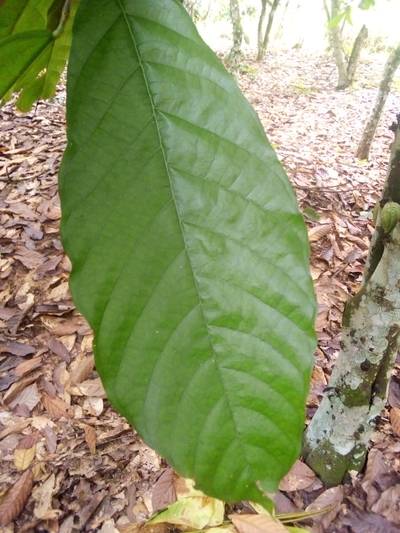

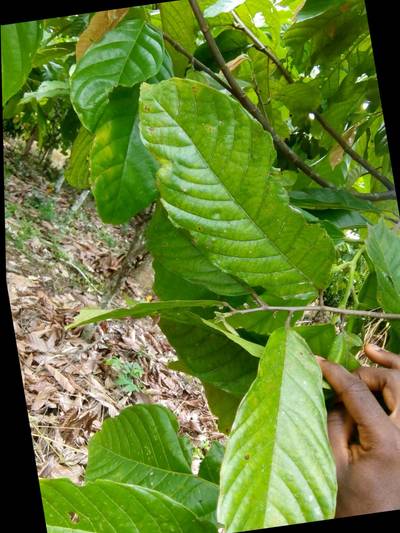

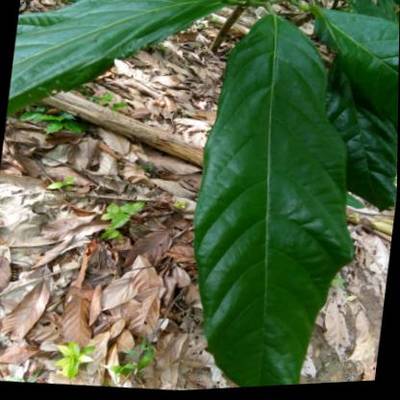

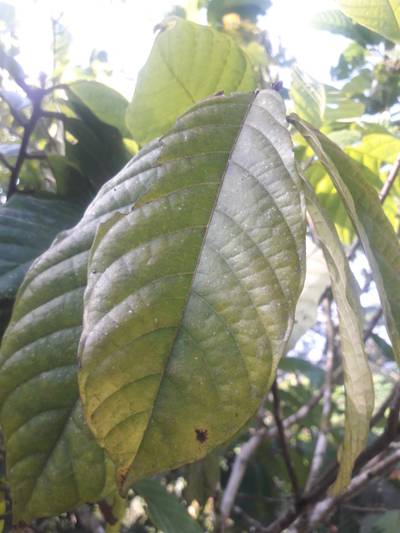

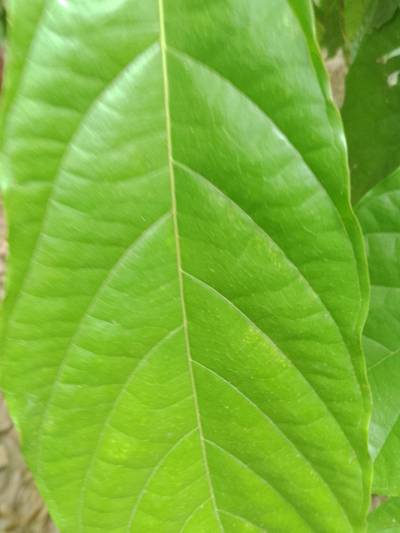

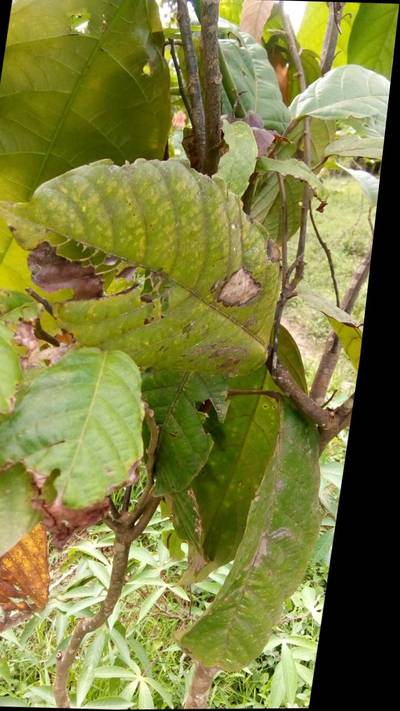

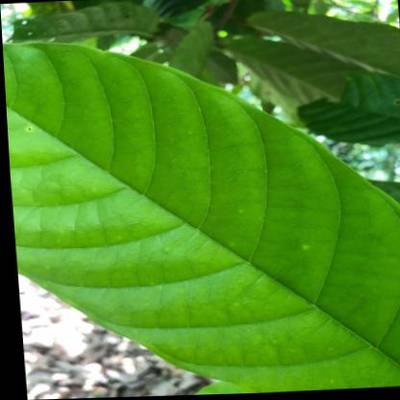



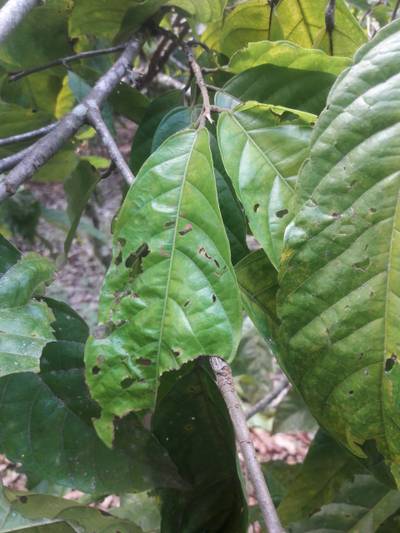
Class balance #
There are 8 annotation classes in the dataset. Find the general statistics and balances for every class in the table below. Click any row to preview images that have labels of the selected class. Sort by column to find the most rare or prevalent classes.
Class ㅤ | Images ㅤ | Objects ㅤ | Count on image average | Area on image average |
|---|---|---|---|---|
cocoa-swollen-shoot-virus-leaf➔ rectangle | 5638 | 8165 | 1.45 | 62.35% |
anthracnose-leaf➔ rectangle | 2996 | 4777 | 1.59 | 61.35% |
healthy-cocoa-leaf➔ rectangle | 2143 | 6130 | 2.86 | 57.7% |
healthy-cocoa-pod➔ rectangle | 842 | 2013 | 2.39 | 26.25% |
anthracnose pod➔ rectangle | 229 | 289 | 1.26 | 43.32% |
cocoa-swollen-shoot-virus-pod➔ rectangle | 116 | 158 | 1.36 | 16.84% |
healthy-cocoa➔ rectangle | 86 | 98 | 1.14 | 32.41% |
cocoa-swollen-shoot-virus-stem➔ rectangle | 58 | 82 | 1.41 | 38.69% |
Co-occurrence matrix #
Co-occurrence matrix is an extremely valuable tool that shows you the images for every pair of classes: how many images have objects of both classes at the same time. If you click any cell, you will see those images. We added the tooltip with an explanation for every cell for your convenience, just hover the mouse over a cell to preview the description.
Images #
Explore every single image in the dataset with respect to the number of annotations of each class it has. Click a row to preview selected image. Sort by any column to find anomalies and edge cases. Use horizontal scroll if the table has many columns for a large number of classes in the dataset.
Object distribution #
Interactive heatmap chart for every class with object distribution shows how many images are in the dataset with a certain number of objects of a specific class. Users can click cell and see the list of all corresponding images.
Class sizes #
The table below gives various size properties of objects for every class. Click a row to see the image with annotations of the selected class. Sort columns to find classes with the smallest or largest objects or understand the size differences between classes.
Class | Object count | Avg area | Max area | Min area | Min height | Min height | Max height | Max height | Avg height | Avg height | Min width | Min width | Max width | Max width |
|---|---|---|---|---|---|---|---|---|---|---|---|---|---|---|
cocoa-swollen-shoot-virus-leaf rectangle | 8165 | 44.75% | 100% | 0% | 1px | 0.03% | 4128px | 100% | 999px | 64.75% | 1px | 0.08% | 3096px | 100% |
healthy-cocoa-leaf rectangle | 6130 | 24.46% | 99.52% | 0% | 2px | 0.48% | 3264px | 100% | 632px | 48.45% | 3px | 0.72% | 4026px | 100% |
anthracnose-leaf rectangle | 4777 | 42% | 100% | 0% | 1px | 0.08% | 4119px | 100% | 1622px | 65.57% | 3px | 0.31% | 4127px | 100% |
healthy-cocoa-pod rectangle | 2013 | 11.62% | 84.54% | 0.06% | 7px | 1.68% | 4052px | 98.93% | 668px | 30.61% | 14px | 1.66% | 2774px | 90.94% |
anthracnose pod rectangle | 289 | 36.21% | 96.08% | 0% | 1px | 0.08% | 3903px | 99.9% | 1191px | 60.14% | 3px | 0.31% | 2716px | 99.95% |
cocoa-swollen-shoot-virus-pod rectangle | 158 | 13.09% | 41.03% | 1.02% | 121px | 9.57% | 2549px | 61.75% | 655px | 30.75% | 100px | 6.51% | 1943px | 75.98% |
healthy-cocoa rectangle | 98 | 28.44% | 74.45% | 4.99% | 754px | 24.33% | 3182px | 97.49% | 1755px | 54.82% | 480px | 19.61% | 3200px | 98.04% |
cocoa-swollen-shoot-virus-stem rectangle | 82 | 28.41% | 79.26% | 1.75% | 243px | 19.45% | 1269px | 100% | 782px | 68.11% | 86px | 8.98% | 856px | 79.26% |
Spatial Heatmap #
The heatmaps below give the spatial distributions of all objects for every class. These visualizations provide insights into the most probable and rare object locations on the image. It helps analyze objects' placements in a dataset.

Objects #
Table contains all 21712 objects. Click a row to preview an image with annotations, and use search or pagination to navigate. Sort columns to find outliers in the dataset.
Object ID ㅤ | Class ㅤ | Image name click row to open | Image size height x width | Height ㅤ | Height ㅤ | Width ㅤ | Width ㅤ | Area ㅤ |
|---|---|---|---|---|---|---|---|---|
1➔ | anthracnose pod rectangle | 20211027_142553-5_43_55_jpg.rf.2570f686362ad1de749687cb159b1166.jpg | 2048 x 1536 | 1437px | 70.17% | 866px | 56.38% | 39.56% |
2➔ | anthracnose pod rectangle | 20211027_142553-5_43_55_jpg.rf.2570f686362ad1de749687cb159b1166.jpg | 2048 x 1536 | 1179px | 57.57% | 908px | 59.11% | 34.03% |
3➔ | cocoa-swollen-shoot-virus-leaf rectangle | IMG-20220206-WA0442-9_52_59.jpg | 810 x 1080 | 674px | 83.21% | 1028px | 95.19% | 79.2% |
4➔ | cocoa-swollen-shoot-virus-leaf rectangle | IMG_20211025_100832-11_8_19.jpg | 3264 x 2448 | 1487px | 45.56% | 659px | 26.92% | 12.26% |
5➔ | healthy-cocoa-leaf rectangle | IMG_20211018_114018_5-11_10_12.jpg | 3264 x 2448 | 2734px | 83.76% | 1326px | 54.17% | 45.37% |
6➔ | healthy-cocoa-leaf rectangle | IMG_20211018_114018_5-11_10_12.jpg | 3264 x 2448 | 1515px | 46.42% | 1462px | 59.72% | 27.72% |
7➔ | healthy-cocoa-pod rectangle | IMG_20211108_121424-11_5_16_jpg.rf.6b41ecadeefebb798c537dd35b24b2ea.jpg | 416 x 416 | 276px | 66.35% | 271px | 65.14% | 43.22% |
8➔ | healthy-cocoa-leaf rectangle | -5805312977254071302_121-16_20_18.jpg | 1280 x 960 | 463px | 36.17% | 395px | 41.15% | 14.88% |
9➔ | healthy-cocoa-leaf rectangle | -5805312977254071302_121-16_20_18.jpg | 1280 x 960 | 733px | 57.27% | 353px | 36.77% | 21.06% |
10➔ | cocoa-swollen-shoot-virus-leaf rectangle | IMG_20211023_134338-14_8_3.jpg | 3264 x 2448 | 1586px | 48.59% | 567px | 23.16% | 11.25% |
License #
Citation #
If you make use of the KaraAgro AI Cocoa data, please cite the following reference:
@data{DVN/BBGQSP_2022,
author = {Darlington Akogo and Christabel Acquaye and Emmanuel Amoako and Jerry Buaba and Issah Samori and Joseph, Okani Honger and Stephen Torkpo and Markin, Grace and Bright, Hodasi and Lawrence Gyami Sarfoa},
publisher = {Harvard Dataverse},
title = {{The KaraAgroAI Cocoa Dataset}},
year = {2022},
version = {V6},
doi = {10.7910/DVN/BBGQSP},
url = {https://doi.org/10.7910/DVN/BBGQSP}
}
If you are happy with Dataset Ninja and use provided visualizations and tools in your work, please cite us:
@misc{ visualization-tools-for-kara-agro-ai-cocoa-dataset,
title = { Visualization Tools for KaraAgro AI Cocoa Dataset },
type = { Computer Vision Tools },
author = { Dataset Ninja },
howpublished = { \url{ https://datasetninja.com/kara-agro-ai-cocoa } },
url = { https://datasetninja.com/kara-agro-ai-cocoa },
journal = { Dataset Ninja },
publisher = { Dataset Ninja },
year = { 2025 },
month = { dec },
note = { visited on 2025-12-25 },
}Download #
Dataset KaraAgro AI Cocoa can be downloaded in Supervisely format:
As an alternative, it can be downloaded with dataset-tools package:
pip install --upgrade dataset-tools
… using following python code:
import dataset_tools as dtools
dtools.download(dataset='KaraAgro AI Cocoa', dst_dir='~/dataset-ninja/')
Make sure not to overlook the python code example available on the Supervisely Developer Portal. It will give you a clear idea of how to effortlessly work with the downloaded dataset.
The data in original format can be downloaded here.
Disclaimer #
Our gal from the legal dep told us we need to post this:
Dataset Ninja provides visualizations and statistics for some datasets that can be found online and can be downloaded by general audience. Dataset Ninja is not a dataset hosting platform and can only be used for informational purposes. The platform does not claim any rights for the original content, including images, videos, annotations and descriptions. Joint publishing is prohibited.
You take full responsibility when you use datasets presented at Dataset Ninja, as well as other information, including visualizations and statistics we provide. You are in charge of compliance with any dataset license and all other permissions. You are required to navigate datasets homepage and make sure that you can use it. In case of any questions, get in touch with us at hello@datasetninja.com.


